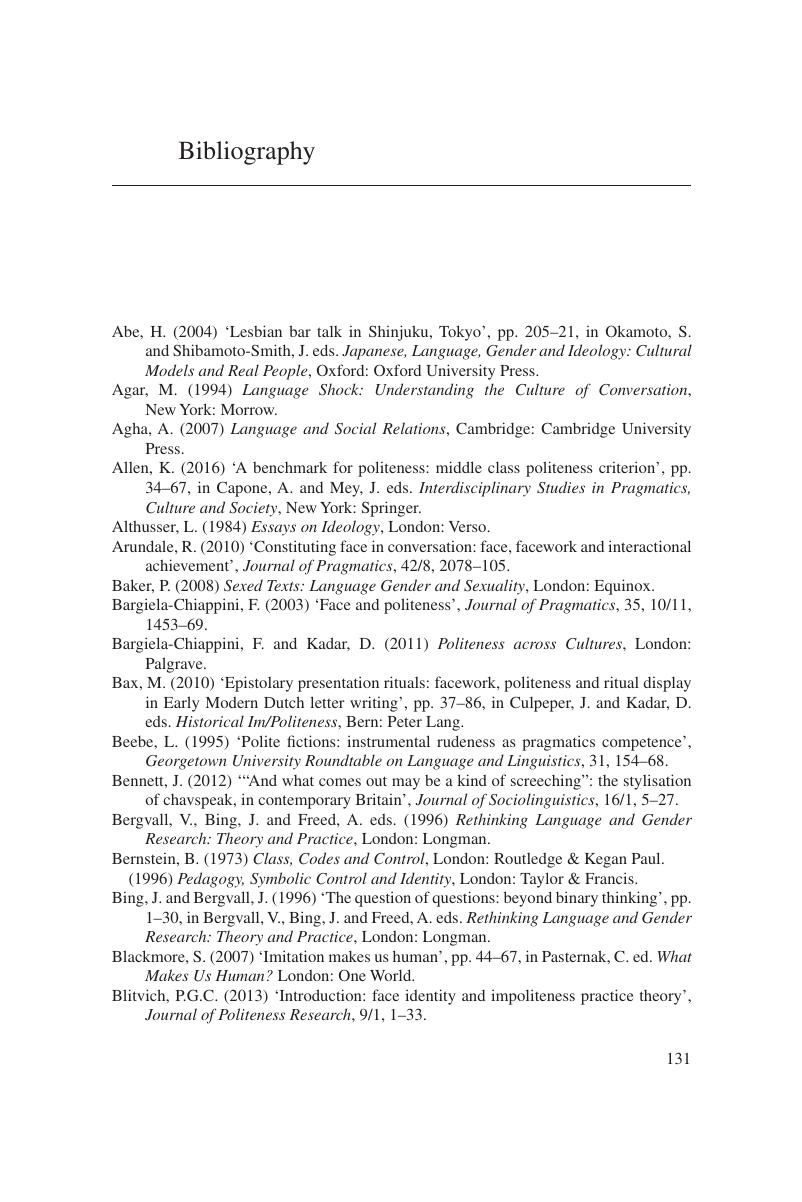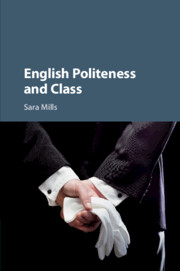Book contents
- English Politeness and Class
- English Politeness and Class
- Copyright page
- Dedication
- Contents
- Acknowledgements
- 1 Introduction
- 2 Traditional Approaches to Language, Culture and Politeness
- 3 Approaches to British-English Politeness
- 4 Politeness and Class
- 5 Materialist Discursive Approach to Politeness, Culture and Norms
- 6 Conclusions
- Bibliography
- Index
- References
Bibliography
Published online by Cambridge University Press: 26 September 2017
- English Politeness and Class
- English Politeness and Class
- Copyright page
- Dedication
- Contents
- Acknowledgements
- 1 Introduction
- 2 Traditional Approaches to Language, Culture and Politeness
- 3 Approaches to British-English Politeness
- 4 Politeness and Class
- 5 Materialist Discursive Approach to Politeness, Culture and Norms
- 6 Conclusions
- Bibliography
- Index
- References
Summary

- Type
- Chapter
- Information
- English Politeness and Class , pp. 125 - 130Publisher: Cambridge University PressPrint publication year: 2017

